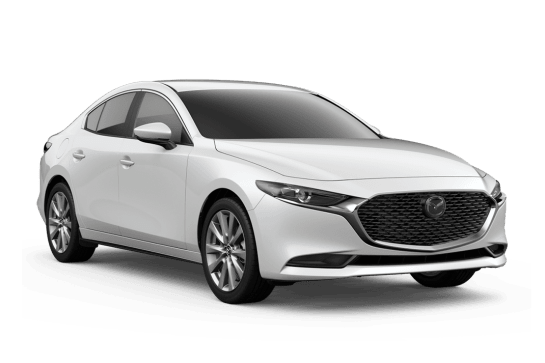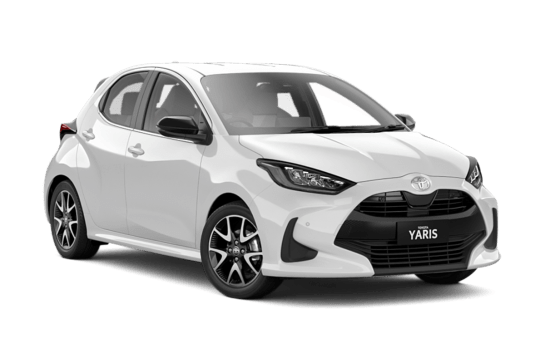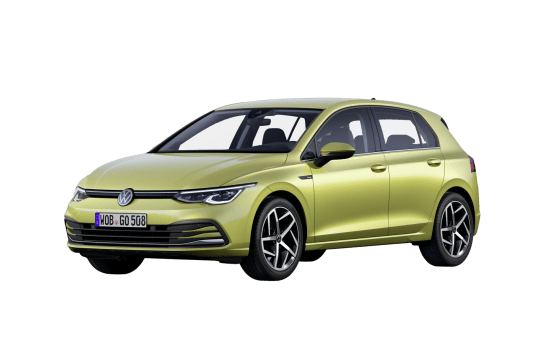
Honda Jazz VS Mazda 2
Honda Jazz
Likes
- Capped-price servicing
- Build quality
- Huge interior space for its size
Dislikes
- No Apple CarPlay/Android Auto
- VTi-S very pricey
- Lack of advanced safety features
Mazda 2
Likes
- Big boot
- Good safety spec
- Smarter looks
Dislikes
- Not very comfy
- Engine not terrific
- Annoying mirrors
Summary
Honda Jazz
Honda's Jazz is like the little engine that could.
It occupies a shrinking part of the market but has seen off a bevy of once-were competitors (most notably the Hyundai i20) and continues to battle gamely with the Mazda2.
Honda gave the range a little tweak in late 2017 to hand us the MY18 Honda Jazz. Some features were lost, and a few gained in an effort to keep up with Mazda's finest.
| Safety rating | |
|---|---|
| Engine Type | 1.5L |
| Fuel Type | Regular Unleaded Petrol |
| Fuel Efficiency | 5.8L/100km |
| Seating | 5 seats |
Mazda 2
The Mazda2 range has recently seen some big changes, with the facelifted model aiming to offer customers a different sort of car to what it was before.
It’s more expensive - prices are up by as much as 25 per cent! - but there’s a lot more standard equipment, some new trim levels, and all of them also get the G15 alphanumeric label… but it’s a carryover engine for this facelift, the first major update since 2015.
It’s an intriguing move from Mazda Australia to increase the entry price point by such a big amount because it’s essentially still the same old Mazda2 sedan underneath it all. And it’s not like this part of the market is flush with competitor offerings - there’s no more Hyundai Accent, the Kia Rio sedan is dead, there’s no Ford Fiesta sedan, Honda isn’t going to sell the new City model, you can’t get an MG 3 sedan, or a Kia Picanto sedan… in fact, there’s no other light sedan on the market anymore.
But there are some slightly larger sedans that are close on size, and in some grades even undercut the updated Mazda2 sedan when it comes to price.
So, does the most urban-friendly sedan on the Australian new car market still make sense?
| Safety rating | |
|---|---|
| Engine Type | 1.5L |
| Fuel Type | Regular Unleaded Petrol |
| Fuel Efficiency | 5.5L/100km |
| Seating | 5 seats |
Verdict
Honda Jazz7.1/10
The Honda Jazz is an extremely capable small car, with an ace card of virtually unbeatable interior space. While it's hardly an excitement machine, or the best looking or equipped in its class (it is missing out on some useful safety gear), the Jazz deserves its status as a well-loved hatchback.
The best in the range is probably the VTi. There isn't anything compelling further up the variants unless you're keen on bigger wheels or leather trim. Its entry-level offering is a good-value, sturdy car that is packed with its best qualities, no matter which one you buy.
Does the Honda Jazz stack up for you? Or do offerings from Hyundai, Mazda and Kia get your bargain-hunting senses tingling?
Mazda 27/10
If you need a brand-new city-sized light sedan, your only choice is the Mazda2.
But if you can deal with a slightly larger car, you’ll get a more comfortable, enjoyable and spacious experience by choosing a Kia Cerato or Hyundai Elantra, both of which you’ll probably get for less money than this base model Mazda2 G15 Pure.
Design
Honda Jazz6/10
The Jazz's exterior design is instantly recognisable. The shape has been roughly the same since the car's 2002 debut, with the mildest evolution over the years. The 2018 Jazz leads with the chin a bit, with a pronounced underbite and when fitted with a chrome grille, it looks a bit like the giant Jaws from James Bond after whacking his head.
Apart from that, the slimmed headlights and one-box body shape are almost entirely inoffensive, save for the chunky, stacked rear lights.
When you head inside it's a simple, basic interior. Well put together, it's easy to find your way around and, because there isn't much happening in here, it's unlikely you'll need the owner's manual, unless you want to identify and use every single deployment of the excellent Magic Seats in the back.
As you climb the range, you'll start to see body-kit additions like a rear spoiler and side skirts, but nothing particularly racy.
Mazda 2
The Mazda2 sedan has always been one of those cars that packs more in than you’d think - especially the boot. We’ll get to that in the next section.
But let’s cover off what has changed from the pre-facelift model to this one, because you may have noticed it looks a little different.
That’s because it has revised front and rear bumpers, which are cleaner and simpler than before, and the grille now has a mesh finish rather than the plastic beam section of its predecessor.
The rear does, too, with the new back bumper design and tail-light finish making it appear a little more contemporary.
It carries off its size pretty well. The Mazda2 sedan is 4340mm long (on a 2570mm wheelbase), 1695mm wide and 1495mm tall.
The cabin of the Pure model has seen some cosmetic adjustments, but the overall design remains the same. Check out the interior pictures to see what we’re talking about.
Practicality
Honda Jazz9/10
The interior is full of cleverness packed into a small space. The centre console has two cup holders, a space for your phone and a compartmentalised open tray reachable by both front and rear-seat passengers. A third cupholder folds out of the dash on the driver's side. The back seat doesn't have any cupholders, unfortunately, and nor is there a centre armrest.
Rear legroom is impressive for such a small car - it's no wonder the HR-V compact SUV was spun off the Jazz platform. Added to that are the excellent 'Magic Seats', which fold in a variety of ways to increase the boot space dimensions from 354 litres to 1314 litres.
Luggage capacity is not bad for such a small car and with the flexible interior, the boot size goes up by four times in volume. This is one area in which it really does outdo the Mazda2. The removable cargo cover means you can get a decent chest of drawers in, however there's a bit of a drop once you get things over the loading lip.
You can also fold the seat bases up and out of the way to provide space for shrubbery, or a dog, or an awkward flat pack.
The basic VTi misses out on a bit of storage, namely the centre console storage box and driver's side seatback pocket, but the rest of the range has them both.
Mazda 2
If you’re choosing the Mazda2 sedan over the hatch, you’re effectively stating that your prioritise boot space in your life. And good for you, because the Mazda2 sedan has 440 litres (VDA) of cargo capacity. The luggage capacity can be expanded by way of 60:40 split-fold rear seats, too.
It’s easily large enough for the CarsGuide pram, and also managed to fit all three of our suitcases (124-litre, 95-litre and 36-litre) in though any more than that and the gooseneck hinges for the boot-lid could make for some issues actually closing the boot. The aperture is a very good size, and it’s not hard to load things in because it’s a nice low opening, too.
The seat trim of the Pure model is brown cloth, which will either tickle your fancy… or not. The trim is fine, and so is the perceived quality of the fit and finish. There are simple ergonomic instruments like manual dials.
There’s a nice leather steering wheel, but there is no digital speedometer, no head-up display, and no centre console bin or armrest. There is a pair of cupholders, a small centre bin in front of the shifter, and a small cubby at the back of the console which could be used as a cup holder for rear seat passengers.
The 7.0-inch media screen is looking small by today’s standards, and while I applaud the addition of Apple CarPlay and Android Auto, I had issues with it every time I drove the car. It wouldn’t connect first time, requiring me to: a) wait the 10-20 seconds for the screen to load; b) plug the USB in; c) wait for it to say “Apple CarPlay failed”; d) unplug and reinsert the USB. Then it was fine. But sheesh I’d get sick of that quick.
The interface - using the rotary dial - is annoying. Touchscreens should be touch-capacitive when using smartphone mirroring. The reversing camera is also a bit low-res in its display.
The back seat isn’t overly spacious. With the driver’s seat set in my position (I’m 182cm tall), my knees were hard up against the seat in front, and my head was brushing the ceiling. That’s despite good toe room and decent cabin width.
Rear occupants don’t get bottle holders, there’s only one map pocket, and there’s no centre armrest. Unlike up front, where the door arm-rest pads are soft, they’re hard in the back. There’s no rear seat air-vents, and the transmission tunnel eats into space more than it probably should in a car of this size.
Price and features
Honda Jazz7/10
The Jazz range is made up of three models. As with any car, how much you get is dependent on how far up the price list you go. Honda occasionaly offers drive-away deals, but we're using RRP as a guide. We've done an exhaustive model comparison as well as snapshots to help you decide between the three trim levels - VTi, VTi-S and VTi-L.
Our American cousins score a Sport edition, but sadly we miss out on that one.
The VTi opens the price range at $14,990 for the five-speed manual, rising to $16,990 for the CVT auto. Standard features include a four-speaker stereo, air-conditioning, reverse camera, remote central locking, projector style halogen headlights, 15-inch steel wheels, cruise control power windows and mirrors, black cloth trim, trip computer and hill-start assist.
The inclusion of the reversing camera is good but the lack of rear parking sensors is mystifying, a problem shared with the VTi-S, although they are optional on both specifications.
While the spare tyre is a space-saver, it's better than a tyre-repair kit, should trouble strike. A small tool kit is also supplied for just such an occasion.
Even with the 2018 update, there is no Apple CarPlay or Android Auto, although you can plug in your iPhone or Android device via the USB port. Irritatingly, the USB port is under a cover next to the 7.0-inch touchscreen itself, so you have a cable poking out of the dashboard. You might prefer Bluetooth in that case.
Step up to the CVT-only VTi-S ($19,990) and you pick up foglights, 16-inch alloy wheels, LED headlights, 'premium' cloth trim, leather-wrapped steering wheel, a centre console with storage box and GPS sat nav.
There is no improvement to the multimedia system.
The VTi-L ($22,990) adds LED daytime running lights, climate control, navigation system (hooray!), smart key keyless entry, push-button start, leather seats, paddle shift for the CVT gearbox, an alarm, bi-LED headlights, LED daytime running lights, heated front seats and two extra speakers,
Missing from the accessories list are a CD changer, DVD player, DAB or MP3, panoramic sunroof, sport pack, black pack, city pack, subwoofer, improved sound system, HID headlights, tonneau cover, roof rack, different rims and even floor mats.
You're stuck with the same infotainment head unit right across the range - its not even a radio/CD player arrangement, just radio and your phone. At least the VTi-L has more speakers for its sound system.
Dealers will no doubt sell you darker tinted windows and an extended warranty.
The Jazz is available in seven colours, with Rally Red the only freebie. For $495 you can have one of six shades of mettallic paint - Crystal Black, Brilliant Sporty Blue, Modern steel (gunmetal grey), Phoenix Orange, Lunar Silver and White Orchid. If you're after pink or yellow, you're out of luck. Not very Jazzy.
Mazda 2
As referenced above, the Mazda2 entry price point is up considerably compared to the pre-update version, thanks to the ditching of the entry-level Neo model.
How much has the price gone up? $5500. That’s a huge price hike for a vehicle in the most coin-conscious segment of the market.
The result is a base model G15 Pure version of the Mazda2 - in both sedan and hatch body-styles - for $20,990 plus on-road costs (also known as RRP / MRSP). And that means it’d be about $24,000 drive-away. It’s essentially the equivalent of the old mid-spec Maxx model, but more expensive.
Oh, and that’s for the six-speed manual, which only a few per cent of people buy. The six-speed automatic - as tested here - is $22,990 plus on-road costs. Or about $26,000 drive-away. For the base model. Eep. However, if you’re in the market, check Autotrader and you’ll probably find decent deals.
If you want the top-spec G15 GT sedan, it’s $25,990 plus on-roads (pushing $30k on-the-road).
There are some pretty impressive inclusions to justify the increases. There are new 15-inch alloy wheels, a system called G-Vectoring Plus (a torque vectoring system designed to improve cornering behaviour), plus there’s LED headlights, hill start assist, a reversing camera and rear parking sensors.
The Pure model misses out on a few things compared to the GT sedan, which has traffic sign recognition, a surround view camera, front parking sensors and adaptive cruise control.
Instead, the Pure has regular cruise control, and a lot of the new additions are safety-focused: it has auto emergency braking (AEB) with pedestrian detection, lane departure warning and lane keep assist, blind spot monitoring and rear cross-traffic alert.
It also debuts the aforementioned smartphone streaming tech of Apple CarPlay and Android Auto, which the Mazda2 hasn’t had up until now. The media screen - which is touch capacitive at a standstill and has a rotary controller to use at speed - also has six speakers, Bluetooth phone and audio streaming, digital radio and optional sat nav.
Just to add a little bit of context to the value equation here, if you can deal with a slightly larger car, you could get into a Kia Cerato or Hyundai Elantra for similar or less money. And that’s what I’d suggest you do.
Under the bonnet
Honda Jazz7/10
All Jazzes are powered by Honda's 1.5-litre single-cam four-cylinder. The engine specs don't make for inspiring reading, with just 88kW and 145Nm. That's not a lot of horsepower, but when you consider the weight of the car, the figures don't look so weedy.
Power goes to the front wheels, so the Jazz is definitely not an off-road proposition.
Only the base model VTi has a choice of manual vs automatic, with a five-speed manual transmission and a CVT auto to choose from.
As to the question of timing belt or chain, the Jazz has the latter, so you don't have to worry about a belt change. The oil type is 5W-30
There is no diesel option, so there'll be no diesel vs petrol argument. Nor is there an EV or plug-in hybrid - with a battery, it's unlikely you'd have much boot space left. There isn't an LPG, 4x4, or AWD version either.
If you can be bothered fitting a towbar, the manual's towing capacity is 1000kg braked while the CVT's load capacity drops to 850kg. Both transmissions will haul 450kg unbraked.
Mazda 2
Under the bonnet of the Mazda2 - no matter which model you choose - there’s the brand’s newly monikered G15 SkyActiv engine. It’s a 1.5-litre gasoline (hence the G15) four-cylinder unit, with 82kW of power (at 6000rpm) and 144Nm of torque (at 4000rpm). Those outputs are up 1kW/3Nm over the pre-facelift car.
It is available with the choice of a six-speed manual or six-speed automatic. Our car had an auto transmission.
There’s no hybrid, plug-in hybrid, electric, turbo-petrol or LPG version of the Mazda2 sold in Australia… or anywhere else, for that matter. You can get it as a diesel in some markets, but not Australia.
Efficiency
Honda Jazz7/10
Fuel figures are slightly different, depending on the gearbox you've chosen. Honda claims you'll get 6.5L/100km on the combined cycle in a manual while the CVT uses a bit less, coming in at 5.9L/100km. So fuel consumption km/L works out at about 15km/L for the five speed and 17.km/L in the CVT.
Real-world consumption is a little different, however. Our most recent test with the manual yielded 8.0L/100km while the CVT chugged down 8.2L/100km. Having said that, you'll see better fuel economy figures in the manual if, as I admitted in my VTi review, you don't drive it enthusiastically. The CVT was a bit disappointing because I was a lot more sedate in that one and it didn't deliver better mileage than the manual.
Fuel-tank capacity is 40 litres.
Mazda 2
The claimed fuel consumption for the Mazda2 G15 auto sedan we drove is 5.3 litres per 100 kilometres.
On our test, which included a range of driving with plenty of traffic snarls, some arterial road cruising, and a short stint of 110km/h freeway motoring, we saw an indicated 7.0L/100km on the car’s trip computer, while our at-the-pump calculation was higher than that, at 7.4L/100km.
The fuel tank capacity for the Mazda 2 sedan is 44 litres.
Driving
Honda Jazz7/10
The Jazz has always been a comfortable, easygoing car with performance figures to match. Its 0-100km/h acceleration is best described as leisurely, so if it's speed your after, this car isn't for you.
That said, the manual VTi is terrific fun to drive. Switch to the CVT, however, and the Jazz's reputation is restored. A good ride for front-seat passengers comes from McPherson struts up front while the rear suspension is by torsion beams, meaning rear-seat occupants can get a few shocks over bumps.
Road noise is a little higher than you might expect, but that's probably a combination of tyres and a commitment to lightness.
Obviously, being such a small car, manouverability is a key advantage. The turning radius is 5.2m, which is good but not super tight and the light, electric power steering makes dodging about easy. It certainly doesn't feel like it's on rails, but that's hardly what a car with a such a small engine size is about.
Ground clearance is 137mm, which is reasonable but jumping gutters is not advised.
In the base manual, you have a five-speed with a light clutch and an easy shift. For a motor missing out on a second cam, let alone a turbo, progress is swift rather than exciting, the engine droning away with a relaxed air. The CVT has an eco mode, which further blunts performance, but a ring of light around speedo glows green if you're behaving yourself.
Mazda 2
With compact dimensions, the Mazda2 sedan is one to consider if you really need a sedan. I don’t know why you’d really need a sedan, and if you’re an urban-dweller you’re likely going to be more naturally drawn to hatchbacks because they’re generally shorter and therefore easier to park.
But if you’re a sedan fancier, then the Mazda2 is just about your only compact choice.
It needs to be said, though, that there are more comfortable cars than the Mazda 2, especially around town.
The suspension of this little car is seemingly designed to offer a sporty experience, which is at odds with the intent of the car. It’s very firm, lacks composure over repetitive lumpy bumps and the suspension is very noisy in that situation too.
It isn’t crashy, but it can lack body control and composure, and at times I felt it was skittering over pockmarks, and it didn’t instil much confidence.
It’s better at higher speeds, and if the road is smooth. And if that’s your user case - or if you simply don’t care much about ride comfort - this could be just fine for you.
There’s no doubt that stiff suspension does help the Mazda2 feel a bit more sporty than it actually is, because it handles direction changes quite well, and as we’ve come to expect of Mazdas today, the steering is direct and sporty feeling. It doesn’t suffer mismatched weighting, either, meaning it feels like when it should and gains heft when you’d expect.
The engine is eager enough, but the throttle requires a bit more management than seems necessary - and that’s actually more to do with the transmission’s logic than anything else. At times when you think you’re pressing hard enough, you might find the engine is labouring, so you press harder on the accelerator and it kicks down and pushes you away with vigour. It’s just not as easy to make smooth progress in normal driving as I’d like.
There is a ‘sport’ mode for the transmission that ultimately solves that problem because it stops the auto gearbox from shifting up to a higher gear (to save fuel), but do you really wanna be in ‘sport’ mode all the time? I know I don’t.
One of my biggest urban driving gripes is Mazda’s insistence to only fit the passenger-side mirror with a convex lens. The driver’s side mirror isn’t convex - and that means other road users can be hard to discern, and to be honest the car’s blind-spot monitoring system saved us from side-swipes a couple of times this week.
Safety
Honda Jazz7/10
The safety specifications include six airbags, ABS, stability and traction controls, brake assist and brake-force distribution. The Jazz was awarded a five-star ANCAP safety rating in January 2015.
Baby car seat security is offered with either three top-tether anchors but there are no ISOFIX points.
Missing is the more comprehensive safety equipment of its key rival, the Mazda2, which has forward AEB as standard, and its mid-range adds reverse AEB and at the top of the range scores reverse cross traffic alert and blind -spot monitoring. The airbag count is competitive, however.
Mazda 2
The Mazda2 has been around for quite a while. It scored the maximum five-star ANCAP crash test rating back in 2015, but the criteria has evolved somewhat since then.
However, it must be stated that Mazda has been proactive in updating its safety spec levels across its entire range, and the Mazda2 is no exception.
Standard safety equipment includes auto emergency braking (AEB) with pedestrian detection (but not cyclist detection), plus all models get a lane departure warning system, lane keeping assistance, blind spot monitoring, rear cross-traffic alert, rear parking sensors, a reversing camera, and even low-speed rear AEB.
The Mazda 2 - be it sedan or hatch - has six airbags (dual front, front side, full-length curtain), and it has dual ISOFIX child seat anchor points and but only two top tether points (outboard).
Ownership
Honda Jazz7/10
Honda's standard five year/unlimited kilometre warranty also comes with capped-price servicing for the first five years or 10 services, whichever comes first. Service intervals are every 10,000km or six months.
Up to 30,000km you won't have any extras but once you hit 40,000km you'll have to do the brake fluid, which is a reaonable $144 extra. Your service cost structure is otherwise simple - $259 for odd numbers and $297 for even.
Many people ask where the Honda Jazz is built, and the answer to that is "not Japan", or in Honda's Thailand plant.
Second-hand values appear strong, with around 60 percent of value retained after three years. Resale value is something of a Honda strength, which is probably to do with a lack of high-profile reliability issues.
A dip into the usual internet forums yields little in the way of common faults, problems, complaints or issues for the Jazz. Some look for automatic transmission problems, others for manual gearbox problems, but the current Jazz seems quite clear of defects in Australian-delivered cars.
Mazda 2
The Mazda range is backed by a five-year/unlimited kilometre warranty plan, which is on par with all the mainstream brands out there, but is behind the likes of Kia.
Mazda Australia has a five-year capped price servicing campaign for all of its models, too, but the service intervals are shorter than competitor brands, too - yes, the company’s cars require servicing every 12 months, but the distance interval is 10,000km - meaning if you do a lot of distance, you might find yourself heading back to the dealer well before the 12-month period is up.
Servicing costs are reasonable, with the average cost per visit working out at $312 over five years/50,000km, not including consumables.
Mazda backs its cars with five years’ roadside assistance.
Worried about Mazda2 problems, reliability, faults, engine issues, transmission problems and other common complaints? Check out our Mazda2 problems page.






























